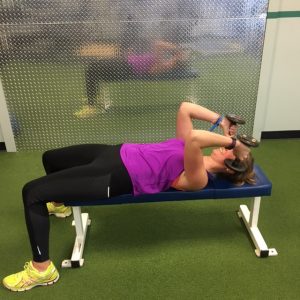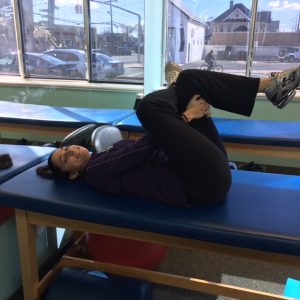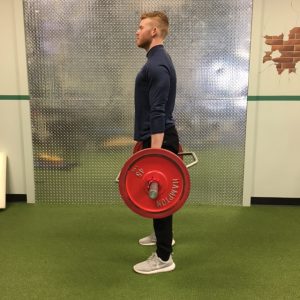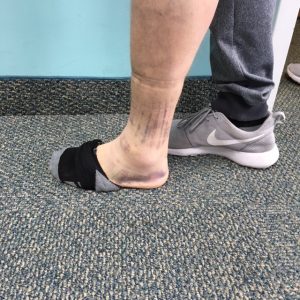The Exercise Physiologists at Peak Performance know all the muscles in the body, but which ones are our favorite?! Every week we will feature a different muscle- so you guys get an anatomy lesson and learn how to work that muscle!
Louise, what’s your favorite muscle?
My favorite muscle is the triceps brachii.
Where is this muscle located?
Triceps are commonly pointed out as the “back of the upper arm.” The triceps actually have 3 heads which originate from different spots; the long head from the infraglenoid tubercle of the scapula, the lateral head from above the radial sulcus, and the medial head from below the radial sulcus. All three heads converge into a tendon which inserts on the olecranon process of the ulna a.k.a your “funny bone.”
What does this muscle do?
The primary function of the triceps brachii is to extend (straighten) the elbow. This is especially important for compound movements such as push-ups, chest press, and shoulder press.
What is a good exercise to strengthen this muscle?
Many of my clients ask for exercises to strengthen this area and there are so many! My personal favorite are “skull crushers,” partially because of their tough name. For this exercise, lay on your back with dumbbells in hand or holding a medicine ball or a barbell. With your arms straight in the air, start to bend the elbow lowering the weight towards your head. Keep those elbows pointed towards the ceiling then press the weight back up to the starting position.



 Speaking from personal experience, not less than a week ago I was playing basketball, jumped up for the ball and came down with all my weight and ended up rolling my ankle. Not only is this terrifying but an eye-opener as well. Escaping with just a bad “grade 2 sprain,” I could have easily fractured a bone or worse. Why wasn’t it worse? Luck, maybe. The fact that I have a strong muscular foundation surrounding and supporting my ankle is what kept me from completely shattering it. The muscles around your ankle hold it together, think of it like a house; you wouldn’t want your house built out of sticks. Same premise applies.
Speaking from personal experience, not less than a week ago I was playing basketball, jumped up for the ball and came down with all my weight and ended up rolling my ankle. Not only is this terrifying but an eye-opener as well. Escaping with just a bad “grade 2 sprain,” I could have easily fractured a bone or worse. Why wasn’t it worse? Luck, maybe. The fact that I have a strong muscular foundation surrounding and supporting my ankle is what kept me from completely shattering it. The muscles around your ankle hold it together, think of it like a house; you wouldn’t want your house built out of sticks. Same premise applies.